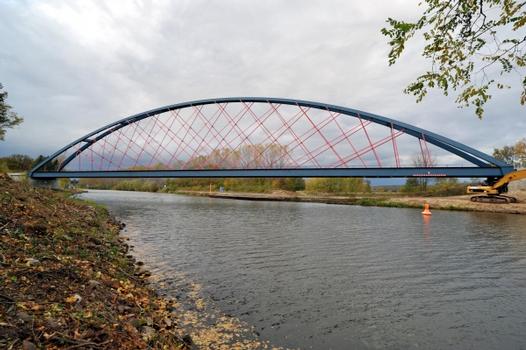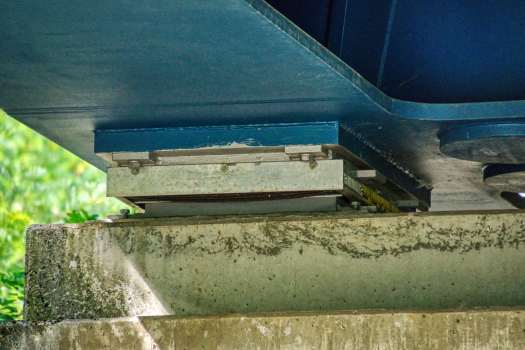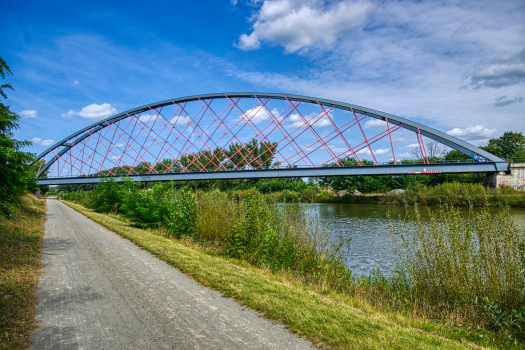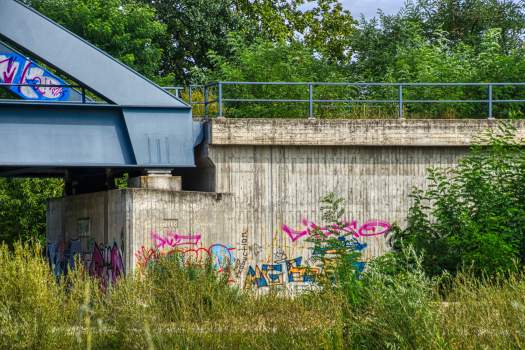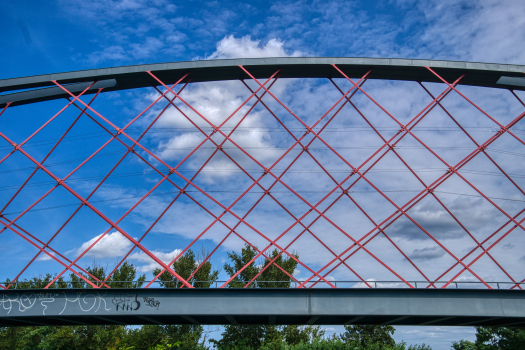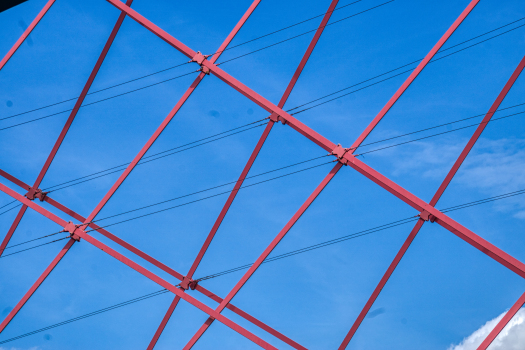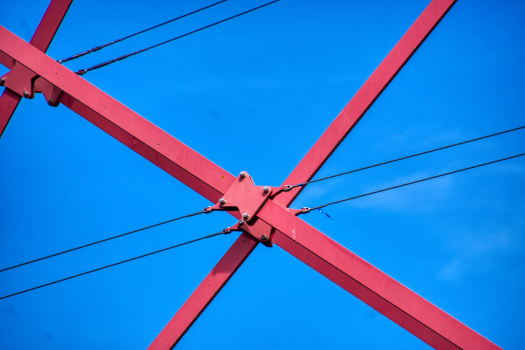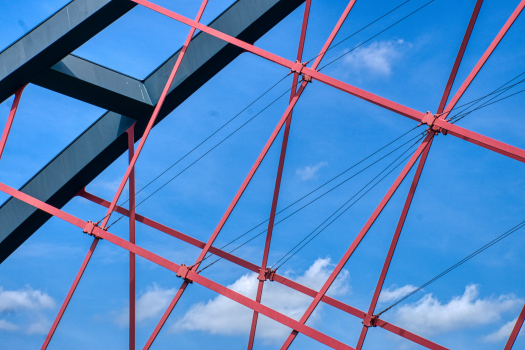General Information
Project Type
| Function / usage: |
Railroad (railway) bridge |
|---|---|
| Structure: |
Network arch bridge |
| Material: |
Steel bridge |
| Support conditions: |
Structurae Plus/Pro - Subscribe Now! |
| Plan view: |
Structurae Plus/Pro - Subscribe Now! |
Location
| Location: |
Haldensleben, Börde, Saxony-Anhalt, Germany |
|---|---|
| Crosses: |
|
| Part of: | |
| Crosses: |
Mittelland Canal (1938)
|
| Location description: |
The bridge carries the Oebisfelde–Abzweig Glindenberg railroad line (route number 6409) over the Mittelland Canal near Haldensleben in the Börde district. |
| Coordinates: | 52° 17' 43.23" N 11° 22' 48.31" E |
Technical Information
Dimensions
| total length | 134.6 m | |
| span | 132.60 m | |
| deck width | 6.95 m | |
| horizontal radius of curvature | ∞ | |
| bridge surface | 1 280 m² | |
| number of tracks | 1 | |
| longitudinal slope | 0 % | |
| crossing angle | 41.77 gon | |
| abutments | number | 2 |
| deck | girder depth | 1.70 m |
| suspenders | number | 2 x 34 |
Quantities
| reinforcing steel content | 190 kg/m³ | |
| substructure | concrete volume | 1 450 m³ |
| reinforcing steel | 280 t | |
| superstructure | structural steel | 845 t |
Design Loads
| design speed | 120 km/h | |
| live load | LM 71; SW/2 | |
| design code(s) | DIN Fachbericht |
Materials
| deck |
steel
|
|---|---|
| arches |
steel
|
| abutments |
reinforced concrete
|
Replacement of the Flora Bridge near Haldensleben
In the course of the expansion of the Mittelland Canal, a replacement new construction of the existing structure became necessary. The tender included the design of a bar arch bridge. Bidders were invited to offer a special proposal for the construction of a network arch in addition to the office design.
The new superstructure was built as a single-span, single-track network arch bridge with a span of 132.60m. Ist arches have a close-welded box section with a variable height from the base of the arch to portal 2; between the inner portals, the height is a constant 700 mm. The circular arches are inclined inwards (80° inclination) in the manner of a basket-handle arch and are joined together at the apex. The arch pitch is 19.00 m. The 1700 mm high stiffening girders are designed as I-shaped welded girders with inwardly inclined web plates.
The main difference compared to the classic bar arch is the modified hanger geometry. In the network elbow, the elbow and tension band are connected by inclined hangers. These hangers are inclined in opposite directions in such a way that they cross each other at least twice. Their inclination in the plane of the sheet varies between 26 and 90 degrees. The number of hangers is relatively high at 30 hangers per arch plane, so that the distances between the hanger connections on the arch and on the stiffening girder are much smaller than in the classic bar arch bridge. This mesh geometry leads to a significant reduction in the bending moments in the arch and stiffening girder and allows these components to be designed in a material-saving way. To prevent the hangers from touching each other at the crossing points, their attachment to the arch is offset in the transverse direction.
Between the stiffening girders is the orthotropic deck consisting of deck plate, longitudinal stiffeners and cross girders. A constant spacing was chosen for the cross girders. The deck plate was stiffened with 6 trapezoidal plate stiffeners.
For reasons of construction technology, the erection was carried out approx. 18m next to the existing structure, whereby an adaptation of the railroad line including the new erection of a flyover over the national road L24 was necessary. The steel superstructure was pre-assembled on an assembly area heaped up on the western side of the Mittelland Canal. Longitudinal shifting into the final position was carried out with the aid of a pontoon. After commissioning of the replacement structure, the existing railroad bridge was dismantled.
Participants
- GMG Ingenieurgesellschaft mbH (superstructure)
- Obermeyer Planen + Beraten (substructure)
- Ralf Schubart (checking engineer)
Relevant Web Sites
There currently are no relevant websites listed.
Relevant Publications
- (2014): Eisenbahnbrücken. Wilhelm Ernst & Sohn Verlag für Architektur & technische Wissenschaften GmbH & Co. KG, Berlin (Germany), ISBN 978-3-433-03097-4, pp. 104.
- (2010): Erfahrungen mit Netzwerkbogenbrücken im Eisenbahnbrückenbau. In: Stahlbau, v. 79, n. 3 (March 2010), pp. 199-208.
- About this
data sheet - Structure-ID
20059159 - Published on:
10/12/2010 - Last updated on:
23/08/2024

